Wilderness Therapy Programs
A Comprehensive Guide for Parents
Teenagers and young adults today face many social, emotional, and behavioral difficulties. 1 in 5 teenagers will struggle with a serious mental illness by the time they turn 18. And this doesn’t even include common everyday struggles teens face like bullying or gaming addictions. Life is no easier for young adults. 1 in 3 college students drops out in the first year. And less than 40% of college students are able to graduate in the standard 4 years.
If you have a struggling teenager or young adult, it can be hard to know how to get help. Wilderness therapy programs can be a very effective solution to help these families, but with over 25 privately run therapeutic wilderness programs and hundreds of government or NGO run wilderness programs it can be hard to know which is the best program for your son or daughter.
The guide is meant to be comprehensive, but as such, not every section will be applicable to everyone. Instead, we invite you to click on the links in the table of contents to jump to the sections that most interest you.
Table of Contents
What is Wilderness Therapy?
Wilderness therapy is a mental health treatment strategy for adolescents with maladaptive behaviors. Wilderness programs combine therapy with challenge experiences in an outdoor wilderness environment to “kinetically engage clients on cognitive, affective, and behavioral levels.”
Sometimes called outdoor behavioral healthcare, wilderness therapy is designed to address problem behaviors by fostering personal and social responsibility and the emotional growth of clients.
The goal of wilderness therapy is to provide:
- Therapeutic assessment
- Intervention and treatment of problem behaviors
- Safety & stabilization
- Lasting change
Wilderness based therapy typically involves:
- A Radical Change of Environment – Wilderness therapy immerses participants in the natural environment as part of the therapeutic process to evoke introspection and facilitate change.
- Challenge Experiences – facilitate self-discovery and personal growth by means of challenging experiences. These experiences teach psychological concepts like flow, grit, growth mindset, and self-efficacy (more on these below).
- Healthy Relationship Development – living in peer groups provides opportunities for clients to practice healthy relationships.
- Therapy – individual and group therapy sessions facilitate clients’ individual improvements and use group dynamics as a foundation to improve interpersonal effectiveness in families & relationships.
- Teaching Healthy Coping Strategies – programming and educational curricula focused on developing mastery & skills. The wilderness staff guide and model the application of skills and introspection for students.
Is Wilderness Therapy Safe?
YES! A 2012 study found that “the average American adolescent was two times more likely to visit an emergency room than an OBH Council program participant.”
Some people believe that wilderness therapy is dangerous or unsafe. This perception was born from a few “boot camp” programs in the 80s and 90s. Unfortunately, there was nobody regulating these kinds of programs and some of the practices early on were well-intentioned but unsafe. As a result, a number of states created licensing regulations for outdoor youth programs that promote a high level of safety as a result of strict regulations to ensure safety and a positive therapeutic experience.
Another organization emerged with the goal of promoting the safety of students in wilderness programs nationwide. A number of wilderness programs joined together to form the Outdoor Behavioral Health Council and establish best practices for safety and treatment, initiate research, and lead an accreditation process.
Today, the reality is that being at an OBH member program is safer than being at home for the average teen.
Benefits of Wilderness Therapy
The benefits of wilderness therapy can be grouped into four main categories:
- Improved mental, emotional & behavioral health through intensive clinical assessment & intervention.
- Development of healthy coping strategies and skills that help facilitate changes in attitude, behavior, academic performance & interpersonal relationships.
- Self-identity Development
- Improved Family Relationships
Let’s discuss each area more in depth.
1. Improved Mental, Emotional & Behavioral Health
Through Intensive Clinical Assessment & Intervention
Research shows that wilderness therapy can significantly decrease adolescent depression, anxiety & stress. A wilderness setting engages even resistant clients in the therapeutic process. Hiking in nature reduces rumination (a negative pattern of thinking & brain activity associated with depression) and increases neuroplasticity. This is another way of saying that nature helps these adolescents to be more open to the therapeutic process.
A wilderness program also provides an environment where a therapeutic alliance naturally forms between your son or daughter and our staff. When teenagers & young adults are in nature, surrounded by staff members that truly care for them, and who are participating in the same experiences, they form a bond that allows change & growth to happen in an organic way where it doesn’t feel like therapy.
When these adolescents are open to the process and feeling safe and connected to our staff, our wilderness therapists are able to guide an intense therapeutic journey that would take many more months in a non-wilderness setting. This therapeutic process has two parts: assessment & intervention.
Intensive Clinical Assessment
Understanding is the first step in creating lasting change for our clients & their families. Before we can help change unhealthy patterns and behaviors, we have to know what is causing them. For example, it’s not enough for us to only teach anger management, or even for our clients to simply be less angry. We want them to be truly happy. And to do that, we have to uncover and address the root of their struggles.
Sometimes, the clinical assessment includes having your son or daughter meet with a psychologist to get more in-depth testing. Testing is particularly helpful if our wilderness program is just the first step in treatment. If your son or daughter will continue healing at a residential treatment center, therapeutic boarding school, or an aftercare or transition program, then psychological testing and a wilderness therapist assessment are important data points that educational consultants consider when recommending next steps.
Intervention
Being in nature is an intervention of itself. In addition to this, your son or daughter will have an individual therapy session with a therapist each week. Together, they will discuss:
- the negative patterns and behaviors that caused your family to seek help from a wilderness program
- if/how those patterns and behaviors have been recreated in the group here at the wilderness program
- personalized intervention plan to help your son or daughter create healthier coping skills.
A follow-up study published in 2004, when clients were two to three years out of their outdoor behavioral healthcare treatment, found that:
83 percent were doing better, and 58 percent were doing well or very well. 17 percent were still “struggling.”
81 percent rated outdoor behavioral healthcare treatment as effective
86 percent were in high school or college, or had graduated from high school and were working.
2. Developing Healthy Coping Strategies & Skills
In addition to resolving specific therapeutic struggles, wilderness programs strive to replace negative coping behaviors with healthy coping strategies and skills. These social & emotional skills have been proven to help changes in attitudes, behavior, academic performance, and interpersonal relationships.
Why Social & Emotional Learning?
If we’re trying to improve mental & behavioral health, then why do wilderness programs focus on developing social & emotional skills? Social interactions and emotional regulation are major pieces in healthy psychosocial development. When teens and young adults master personal growth, they don’t just stop being depressed or anxious, they are prepared to thrive in intense social, academic, and professional settings.
“Social and emotional skills are the tools both children and adults use in social interactions and to manage every day emotional responses. Things like social awareness, setting goals, and taking responsibility for oneself are imperative to maintaining healthy relationships and practicing self-care.” (What is SEL?)
“Students with SEL training scored 13 points higher academically than their peers 3.5 years later, had 6 percent better high school graduation rates, and could even reap lifelong monetary benefits for their healthy adult lifestyle.” (SEL Boost Student’s Scores, Graduation Rates & Earnings)
Social and emotional learning focuses on improving three areas:
- Develop intrapersonal skills: self-awareness and self-management skills to achieve school and life success.
- Use social awareness and interpersonal skills (relationship skills) to establish and maintain positive relationships.
- Demonstrate decision-making skills and responsible behaviors in personal, school, and community contexts.
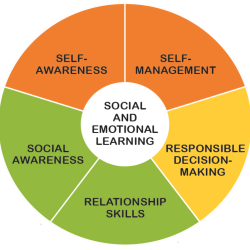
A) Intrapersonal Skills: Self-awareness, Self-management & Self-regulation
“Know thyself” isn’t just an ancient saying. Much of your child’s health & success relies on their relationship with themselves. Wilderness therapy helps these adolescents become more self-aware. And then when they are more aware, they can practice self-management & self-regulation.
The ability to accurately recognize one’s own emotions, thoughts, and values and how they influence behavior. Students in wilderness programs come to know their strengths and limitations, with a well-grounded sense of confidence, optimism, and a “growth mindset.” Self-awareness skills and principles include: Self-awareness skills and principles include:
- Identifying emotions
- Accurate self-perception
- Recognizing strengths
- Goal striving
- General determination
- Self-confidence
- Self-efficacy
- Growth Mindset
- Autonomy (enmeshment, helicopter parenting, lawnmower parenting)
- 3 levels of communication (Root issues & meaning)
- Gratitude
- Shame resilience
- Optimism
Effectively managing stress, controlling impulses, and motivating yourself to set and achieve goals. Whether by striping away the distractions of life, or through challenging adventures, wilderness therapy teaches clients the ability to successfully regulate one’s emotions, thoughts, and behaviors in different situations. These skills give our students the ability to set and work toward personal and academic goals when they return home. The self-management & self-regulation skills that wilderness can teach, include:
- Impulse control
- Stress management
- Academic & Self-discipline
- Self-motivation
- Goal-setting
- Organizational skills
- Responsibility
- Maintaining composure
- Grit – sustaining effort, work ethic/conscientiousness
- Frustration tolerance – ability to complete tasks and handle frustration
- Resilience
- Healthy Habits
- Sleep Hygiene
- Exercise
- Nutrition
B) Interpersonal Skills: Social Awareness & Relationship Skills
Having a healthy social support network is a key component to mental & emotional health. Your child’s ability to form a strong support system depends on their social awareness & ability to develop healthy relationships.
Social awareness helps us understand the perspectives of others and empathize with them, including those from diverse backgrounds and cultures. The ability to take the perspective of and empathize with others, including those from diverse backgrounds and cultures. These skills help us to understand social and ethical norms for behavior and to recognize family, school, and community resources and supports. Social awareness skills include:
- Perspective-taking
- Empathy
- Appreciating diversity
- Respect for others
- Emotional Bank Accounts
- Personal Way of Being (Arbinger)
Relationship skills provide the ability to communicate clearly, listen well, cooperate with others, resist inappropriate social pressure, negotiate conflict constructively, and seek and offer help when needed. These skills form our ability to establish and maintain healthy and rewarding relationships with diverse individuals and groups. Relationship skills include:
- Communication & conflict resolution
- Social engagement
- Social activity
- Social connection
- Family relationships & involvement
- Relationship-building
- Teamwork & Collaboration
- Socializing with others
- Curiosity – keeping an open mind includes intellectual openness
- Boundaries (for parents)
- Boundaries (for teens & young adults)
C) Responsible decision-making and problem-solving skills:
Responsible decision-making and problem-solving involves making constructive choices about personal behavior and social interactions based on ethical standards, safety, and social norms. The ability to make constructive choices about personal behavior and social interactions based on ethical standards, safety concerns, and social norms. The realistic evaluation of consequences of various actions, and a consideration of the well-being of oneself and others. Responsible decision-making skills include:
- Identifying problems
- Analyzing situations
- Solving problems
- Evaluating
- Reflecting
- Ethical responsibility
- Leadership
Additional Resources on Social and Emotional Learning:
3. Strong Self-identity & Self-esteem
Dr. Mark Widmer, Aspiro’s independent research director, has identified six steps that are necessary to help develop a healthy, personal identity
- New Experiences – For many, a wilderness program may be the first foray into nature. We are so lucky to operate in the state of Utah, where there is an incredible variety of environmental topography. One week might be spent in the desert, another in the high alpine mountains. Our students have an astonishing diversity of spectacular landscapes to discover.
- Challenge – Our program is designed to challenge our students. Whether it is writing a letter accepting responsibility for past mistakes, gearing up for a new activity, or living in a group peacefully, opportunities for personal challenge are everywhere.
- Supportive relationships – Students are encouraged to form healthy, supportive relationships with their peers, field staff and therapists. At Aspiro, we operate on the belief that the therapeutic relationship is our strongest agent of change. Numerous studies looking at psychotherapeutic outcomes indicate that this is the single biggest factor in the change process.
- Increased self-confidence – Research shows that wilderness students report a 38% increase in self-confidence. When faced with success in their abilities, students begin to believe in themselves again. This is not simply improved self-esteem, but rather the result of practical hard work and overcoming challenges.
- Fun – Whether it is giggling about having to eat beans and rice instead of hamburgers, or high-fiving after an epic hike, students in wilderness therapy have countless opportunities for peak experiences. Though it is hard work, it is undeniably fun. Our students will make memories that last a lifetime.
- New Self-Perceptions – wilderness programs don’t accept the status quo, we challenge unhealthy patterns and expect self-reflection as part of the therapeutic process. Our students graduate with a more mature sense of self and their role within the family system.
Learn more about building self-identity & self-esteem:
4. Improved Family Connections
Wilderness therapy focuses on healing families in addition to the individual student enrolled in the therapeutic wilderness program. Letter writing is utilized to promote thoughtful communication, and designed such that family members can each take accountability, give and receive feedback, and strengthen relationships. Families also connect with our clinical staff on a weekly basis via phone to better understand their child’s needs.
Later in a student’s stay, parents and guardians are invited to join us in Utah for a two day interactive, educational experience called a family seminar, parent seminar or parent visit. The seminar provides a structured, positive reunion that is focused on fostering healthy relationships between students and their families. Though communication and relationships at home might have been challenging, this reunification experience is a necessary step to observe progress. Our goal is to meet families where they are, while maintaining that each family has a unique set of challenges, often times requiring different solutions.
Parents often describe the seminar as educational, fun, relaxed, exciting, and emotionally challenging. This event is similar to what students experience and it is an opportunity for the whole family to develop confidence, efficacy, and determination. The Parent Seminar is grounded in the same evidenced-based practices that we use as a backbone for our program model.
Hopefully, by now, you have a clearer picture of wilderness programs and are anxious to know if there is a program that can help your son or daughter. The next step in finding the perfect match for your family is understanding the different kinds of wilderness programs.
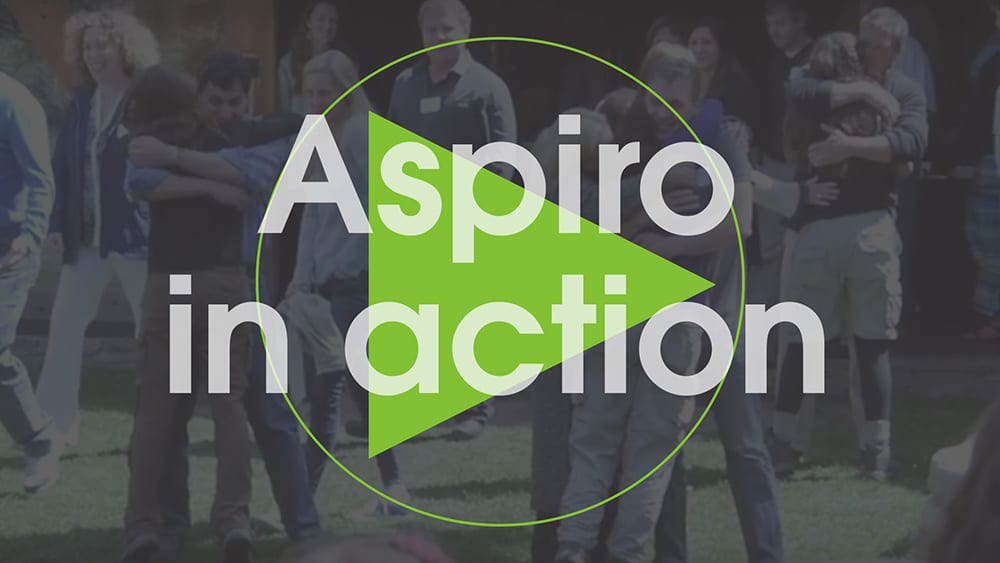
Take A Look For Yourself
We have a detailed selection of videos that visually illustrate the Aspiro program. Please watch the video below and then follow the link to our YouTube channel where you can see more of how we help build a better future for you and your family.
Types of Wilderness Therapy Programs?
Wilderness therapy programs are often confused with other outdoor, experiential education, and leadership development programs. Together, these types of programs are classified as Wilderness Experience Programs (WEP). WEPs are defined as, “organizations that conduct outdoor programs in the wilderness or comparable lands for purposes of personal growth, therapy, rehabilitation, education or leadership-organizational development” (Friese, Hendee, & Kinziger, 1998, p. 40).
Some examples of non-therapeutic experiential education programs include gap year programs, adventure travel programs like Outward Bound and NOLS, and summer camps and adventure leadership programs like the scouting programs.
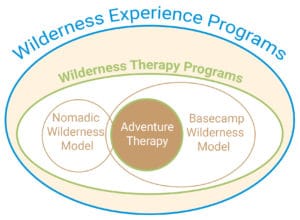
The Role of Nature in Wilderness Programs
One of the unifying features of these Wilderness Experience Programs is their immersion in nature. Wilderness programs think of the environment not merely as a setting but as a partner in the process. The role of nature is twofold:
First, it is empowering for these students to discover they can survive in the wilderness. They experience a greater sense of self-efficacy and internal locus of control.
Secondly, just being in nature provides a huge list of therapeutic benefits. Nature therapy:
- has a therapeutic effect
- relieves stress
- restores attention
- increases happiness& decreases levels of depression
- boosts one’s mood
- and improves one’s self-esteem
We highly recommend reading Last Child in the Woods and The Nature Fix to learn more about how nature can help your son or daughter be happier, healthier, and more creative.
When focusing on therapeutic wilderness programs, there are two main models:
- Nomadic wilderness therapy model
- Basecamp wilderness therapy model including adventure therapy programs
Nomadic/Expedition-based Wilderness Therapy Model
The nomadic wilderness therapy model is based on the philosophy that getting adolescents out of the hectic, dopamine-on-demand world we live in and putting them in a much simpler, distraction free environment will give them the unstructured time and space they need to work through their thoughts, emotions & maladaptive behaviors.
The goal is to provide these students with “a true wilderness experience,” to be in the wilderness 24/7 for the duration of their therapeutic stay. Students are transported out to the field and remain there for the duration of their treatment. Hygiene occurs in the field, staff shift changes happen in the field, food & supplies are transported to the students in the field. Even the therapists drive out to and lead individual and group therapy sessions in the field, often spending the night in the wilderness themselves.
Why Wilderness Therapy Works
There are a couple of foundational principles that make wilderness therapy programs work:
Removal from everyday life: what may at first glance look to be boredom therapy, these programs provide a needed reprieve from the constant stimulation of modern life.
“Wilderness is devoid of escape hatches: Hiding in one’s room playing computer games is not an option. These students are in an emotionally safe place, they’re not going anywhere and they’re exercising, eating healthy and sleeping well.
In addition, the longer stay helps break down defensive barriers, with young people typically going through an avoidance stage, a learning stage, and a stage in which they start to internalize healthier thinking and behavior patterns.” (APA September 2013, Vol 44, No. 8)
Reliance on Natural Consequences – Being immersed in the wilderness allows staff to step away from traditional roles of authority and let nature take the role of rule maker. By allowing the wilderness to enforce natural consequences, the role of the wilderness staff changes from an authority figure to guide, helping students recognize the connection between their choices and the consequences that follow. As most of these therapeutic moments happen outside of therapist visits, the wilderness staff act as vital guides to these moments of change and insight. Recognizing and experiencing natural consequences has a great impact on developing intrinsic motivation.
Basecamp Wilderness Therapy Model
While wilderness programs that have a basecamp model also focus on limiting distractions and reliance on natural consequences, the main “agent of change” is slightly different from nomadic wilderness programs. While one prominent wilderness program is based on horticultural therapy, most basecamp wilderness programs are based on adventure therapy.
What is Wilderness Adventure Therapy?
Adventure therapy is a form of therapeutic intervention that utilize experiential activities involving perceived risk and that are both physically and emotionally challenging. Wilderness adventure therapy differs from nomadic wilderness programs through this use of high adventure activities. In addition to backpacking expeditions, adventure therapy programs may go mountain biking, rock climbing, skiing, river rafting, or canyoneering for example.
As part of the adventure therapy programing, students and staff return each week to a base of operations. While there, the students meet with their individual therapist, participate in group therapy, wash their clothes, and prepare for the next weeks adventures.
What is Horticultural Therapy?
The American Horticultural Therapy Association (AHTA) states that, “horticultural therapy is the participation in horticultural activities facilitated by a registered horticultural therapist to achieve specific goals within an established treatment, rehabilitation, or vocational plan. Horticultural therapy is an active process which occurs in the context of an established treatment plan where the process itself is considered the therapeutic activity rather than the end product.”
To learn more about horticultural therapy programs near you please visit AHTA.org or talk with your educational consultant.
Why Adventure Therapy Works
Adventure therapy works by creating peak experiences where students experience feelings of overwhelming mastery & flow or being in the zone.
Peak Experiences – “Peak experiences are those moments, lasting from seconds to minutes, during which we feel the highest levels of happiness, harmony, and possibility.”
The concept was originally developed by Abraham Maslow in 1964. Peak experiences are “rare, exciting, oceanic, deeply moving, exhilarating, elevating experiences that generate an advanced form of perceiving reality” he explained, “During a peak experience the individual experiences an expansion of self, a sense of unity, and meaningfulness in life. The experience lingers in one’s consciousness and gives a sense of purpose, integration, self-determination and empathy.”
Overwhelming Mastery Experiences – These experiences occur when people face and overcome challenges that they previously thought were substantially beyond their capabilities (Taniguchi, et al, 2017). Mastery experiences are one of the primary factors leading to increased self-efficacy.
Flow – The father of flow, Mihaly Csikszentmihalyi, defined flow as moments when “You know that what you need to do is possible to do, even though difficult, and sense of time disappears. You forget yourself. You feel part of something larger.”
In his book, The Rise of Superman, co-founder of the Flow Genome Project, Steven Kolter, explains the connection between flow and adventure: “FLOW might be the most desirable state on earth; it’s also the most elusive. Seekers have spent centuries trying, yet no one has found a reliable way to reproduce the experience…except action and adventure sports athletes.”
He then outlined 17 flow triggers, all of which can be developed by adventure wilderness activities:
Producing flow requires long periods of uninterrupted concentration. Deep focus. This means multi-tasking is out. Flow demands singular tasks and it demands solitude.
Know what you’re doing and why you’re doing it—that’s the point. When goals are clear, the mind doesn’t wonder what it has to do next, it already knows. Our focus can stay pinned to the present moment and the present action.
As a focusing mechanism, immediate feedback is something of an extension of clear goals. Clear goals tell us what we’re doing; immediate feedback tells us how to do it better. If we know how to improve performance in real time, the mind doesn’t go off in search of clues for betterment, we can keep ourselves fully present and fully focused and thus much more likely to be in flow.
Flow exists near (but not on) the midline between boredom and anxiety. If the task is too boring, attention disengages and action and awareness cannot merge. If the task is too hard, fear starts to spike, and we begin looking for ways to escape the situation.
When there’s danger lurking in the environment, we don’t need to concentrate extra hard to focus. Since survival is fundamental, when there is perceived risk, our brain’s first priority is to look for any sign of a threat and focus intently upon it.
A rich environment means an environment with lots of novelty, unpredictability and complexity— three things that catch and focus our attention, much like risk. One researcher called the use of this rich environment the “disequilibrium” principle. This is when clients are faced with novel situations in which they need to develop new ways of thinking and acting, and a new set of skills and behavior in order to master the situation.
Our ideas are visible, they have quality and evoke strong feelings. When we are in flow we deeply embody our values to good effect, presenting what we stand for.
Complete concentration is required. To create similar flow in social settings, it can help to ensure everyone has their maximum attention to the here and now and blocked off from other distractions.
Groups need to be clear about what their collective goal is in order for flow to happen.
Constant communication is necessary for group flow. Even while deep listening, the conversation must move forward. This follows the most important rule of improv: “Yes, and…”
The group has a common language, a shared knowledge base and a communication style based on unspoken understandings.
Flow is most likely to happen in a group setting when all participants have an equal role in the project. For this reason, all members should have similar skill levels.
“If you’re interested in mastery,” says University of Cambridge, England, neuropsychologist Barbara Sahakian, “you have to learn this lesson. To really achieve anything, you have to be able to tolerate and enjoy risk. It has to become a challenge to look forward to. In all fields, to make exceptional discoveries you need risk—you’re just never going to have a breakthrough without it.”
Combines autonomy (being free to do what you want) and competence (being good at what you do). It’s about getting to choose your own challenges and having the necessary skills to surmount them.
We’re fully engaged in the here and now. In conversation, this isn’t about thinking about what witty thing to say next, or what cutting sarcasm came last. Rather, it’s generating real time, unplanned responses to the dialogue as it unfolds.
This means interactions should be additive more than argumentative. The goal is the momentum, togetherness, and innovation that comes from amplifying each other’s ideas and actions.
If you look under the hood of creativity, what you see is:
- Pattern recognition—the brain’s ability to link new ideas together, and
- Risk-taking—the courage to bring those new ideas into the world.
Both are flow triggers. Creativity triggers flow; then flow enhances creativity.
What is the difference between Wilderness Therapy and Adventure Therapy?
Though it is considered a type of wilderness therapy, adventure therapy programs differ from the nomadic wilderness therapeutic model primarily in how they try to effect lasting change. For example, while both types of programs partner with nature, eliminate distractions, use natural consequences, teach social & emotional learning skills like grit and self-efficacy, and strive to provide flow experiences, they do so to varying degrees and in different ways.
Here are some ways wilderness therapy and adventure therapy are similar:
cise
cise
apy
apy
Role of the Staff
- Ensure the physical & emotional safety of everyone in the group.
- Teach and model adventure & primitive life skills.
- Help interpret natural consequences & mastery skills into therapeutic symbols, guide introspection, and help participants process the intense introspection that comes from being in nature.
Immersion in Nature
“We also at times need longer, deeper immersions into wild spaces to recover from severe distress, to imagine our futures and to be our best civilized selves.”
Physical Exercise
“At every level, from the microcellular to the psychological, exercise not only wards off the ill effects of chronic stress; it can also reverse them…. The mechanisms by which exercise changes how we think, and feel are so much more effective than donuts, medicines, and wine. When you say you feel less stressed out after you go for a swim, or even a fast walk, you are.”
― John J. Ratey, Spark: The Revolutionary New Science of Exercise and the Brain
Role of the Wilderness Therapist
Individual therapy – The therapist typically will meet with each client at base or in the field for individual therapy each week. The purpose of these individual therapy sessions is to address major therapeutic concerns, help provide an in-depth therapeutic assessment, and guide the client through a personalized treatment plan.
Group therapy – Therapists typically lead 2-4 group therapy sessions each week. These allow students to improve their social & emotional skills, challenge and encourage each other in the therapeutic process, and work out any struggles the group may be having.
Communicate with parents & other Mental Health Professionals – Therapists talk with each clients’ parents in order to report the progress made that week and to help improve any struggles in the family dynamics.
Role of the Staff
- Ensure the physical & emotional safety of everyone in the group.
- Teach and model adventure & primitive life skills.
- Help interpret natural consequences & mastery skills into therapeutic symbols, guide introspection, and help participants process the intense introspection that comes from being in nature.
And here are some ways wilderness therapy and adventure therapy differ:
Wilderness Therapy
In the nomadic wilderness model, participants learn grit through the daily routine – breaking down camp, hiking a couple of miles, setting up camp and spending a quiet evening with the group. Then getting up and doing it all over again the next day. The simplicity of nature can be deafening to someone who is used to the constant stimulation of social media & smart phones. And getting up every morning knowing you’ll have to haul a heavy pack a couple of miles is hard for these adolescents who are used to spending the day in school & in front of screens. It is hard at first while new participants build up their reservoir of “grit.” Once they have developed that grit, they are able to apply it in many more aspects of life.
Adventure Therapy
In adventure therapy, participants develop grit through daily & weekly adventure activities. By trying to climb a rock wall, failing, and trying again and again throughout the week until they succeed, participants learn that failing is a step on the road to success. And they learn that “grit” can be their key to success in many aspects of life.
Self-Efficacy:
Wilderness Therapy
Clients learn self-efficacy primarily by learning primitive-based skills like starting a fire with a bow-drill, spoon making, building a shelter, creating primitive arts & instruments, and making moccasins out of leather. As they gain greater mastery of these skills, their self-identity begins to change and they start seeing themselves as capable, a perception that permeates all the other aspects of their lives.
Adventure Therapy
Most participants in adventure therapy have no experience with the various adventure activities. They can’t see themselves as capable of successfully rappelling off a cliff or skiing down a slope. As they participate in each of these activities, not only do they gain the skills necessary to succeed in the activities, but their self-perception and self-identity change. They start to see themselves as able to succeed in the other areas of their lives.
Flow:
Wilderness Therapy
Wilderness therapy participants experience a quieter form of flow as they master their primitive skills. Learning to start a fire with a bow drill takes a focus & practice that makes it almost a meditative experience. And in that moment, after days or weeks of practice, when they’re finally able to start their first fire, participants feel a pure and huge sense of accomplishment and joy.
Adventure Therapy
Challenging adventure experiences often require intense concentration that help participants to “be in the zone.” This often leads our participants to a state of euphoric accomplishment that adventurers refer to as “stoked” or “pumped”. They feel like they are on top of the world and can accomplish anything.
Growth Mindset:
Wilderness Therapy
Participants coming into wilderness therapy tend to have a “fixed” mindset. They don’t think they can make a shelter or start a fire without a match. As they master various primitive skills over the course of the program, their attitude changes from, “I can’t do that” to “I can’t do that yet.”
Adventure Therapy
Participants coming into adventure therapy programs also tend to have a fixed mindset. But there is nothing like rappelling down a cliff when you thought you couldn’t, to change your mindset.
Play:
Wilderness Therapy
In wilderness therapy, much of the play happens spontaneously in an unstructured way on the trail or in camp. It is often lead by the guides who will cater the activities to the needs of the individual students in the group.
Adventure Therapy
In adventure therapy, much of the play is structured & guided by the adventure activities. The guides can guide the structured activities to cater to the needs of individual students in the group.
Role of Consequences:
Wilderness Therapy
Natural consequences are usually immediate and not imposed by guides or therapists, but by nature herself. There is less for participants to fight against & nature does the arguing.
Adventure Therapy
While many of the adventure activities have natural consequences, there are also consequences that are more like life at home – structured & defined
Types of Activities:
Wilderness Therapy
The point of wilderness therapy is to be fully immersed in distraction free natural environment. As such, scheduled activities tend to be minimal. Daily routine consists of waking up, cooking breakfast over a primitively-built fire, packing up camp, hiking a couple of miles, setting up camp and building shelters, cooking dinner over a primitively-built fire, and spare time before going to sleep. During the spare time, guides might teach some primitive skills or participants can write letters home or read a book from their suggested reading list.
Adventure Therapy
Adventure therapy typically has a more structured schedule. Though clients still cook their own meals & help maintain camp, they also participate in weekly adventure activities like mountain biking, rock climbing, skiing, snow shoeing, backpacking, and canyoneering.
You may well be wondering, so which is better wilderness therapy or adventure therapy? The answer is that it depends on the individual needs of your son or daughter. It is important to know who is a good fit for each type of program.
Who is a Good Fit for Wilderness Therapy?
Before you consider wilderness therapy programs for teens or young adults, we recommend you consult with an educational consultant. Not only will an educational consultant help you navigate the nuances of the different wilderness treatment programs, they will help you know when it is the right time to seek out-of-home help.
Who Should Consider Wilderness Therapy?
When trying to help your son or daughter, you should take a progressive approach to therapy and treatment. This means you should work with mental health professionals at home and exhaust less intense therapeutic options before moving on to more intrusive measures.
Before seeking out an educational consultant or agreeing to treatment, families may have experienced some or none of the following:
- 1-2+ years of outpatient therapy
- consulted a psychiatrist
- had psychological testing
- enrolled in an Intensive Outpatient Program (IOP)
- may have even tried a short-term residential treatment program.
- may have been hospitalized for suicidal ideations or a drug overdose.
Who is eligible for wilderness therapy programs?
If you have exhausted all of your options at home and need to seek treatment, it is helpful to know that wilderness therapy is better suited to help certain problems and less suited for others. Below is a list of some exclusionary criteria wilderness programs consider, and a brief list of some of the challenges our students face.
These lists are not meant to be comprehensive, only examples of some of the concerns our highly skilled team has resources to treat in a clinically sophisticated manner.
Exclusionary criteria for a wilderness program MAY include:
- psychosis, schizophrenia, or schizoaffective disorder
- conduct disorders
- students with a history of violence or sexual assault
- students under the age of 9 (there are some pre-teen wilderness programs, but the majority require students to be 12 years old or older)
- students with physical limitations, for example, reliance on a wheelchair or crutches
- any problem requiring prolonged or intensive medical care or monitoring. For example:
- eating disorders severe enough to require a feeding tube
- diabetes
- POTS
If your son or daughter struggles with any of these issues, please talk with an educational consultant. They can put you in contact with a program that specializes in treating troubled teens and young adults with these struggles.
Challenges that wilderness therapy is successful in treating:
- ADD / ADHD
- Addiction
- Adoption issues
- Anger Issues
- Anxiety
- Aspergers
- At-Risk Youth/Risky Behaviors
- Autism
- Behavior Issues
- Body Image Issues
- Cutting & Self-Harm
- Divorce Conflict
- Depression
- Substance Abuse
- Eating Disorders that don’t require medical intervention
- Female Identity Empowerment
- Failing College
- Lack of Motivation
- Learning Disabilities
- Mood Disorders
- Nonverbal Learning Disorder (NLD)
- Oppositional Defiant Disorder (ODD)
- Personality disorders
- Post Traumatic Stress Disorder (PTSD)
- Relational Issues
- Risky/Harmful Sexual Behaviors
- School Avoidance or Failure
- Self-Esteem Issues
- Traumatic Brain Injuries (TBI)
- Troubled Youth
- Gender Identity Struggles
- Suicide Ideation
Still not sure if your family is a good fit for a wilderness treatment program?
Take our self-assessment to find out:
Take our short online assessment and help us better understand how we can help you and your family.
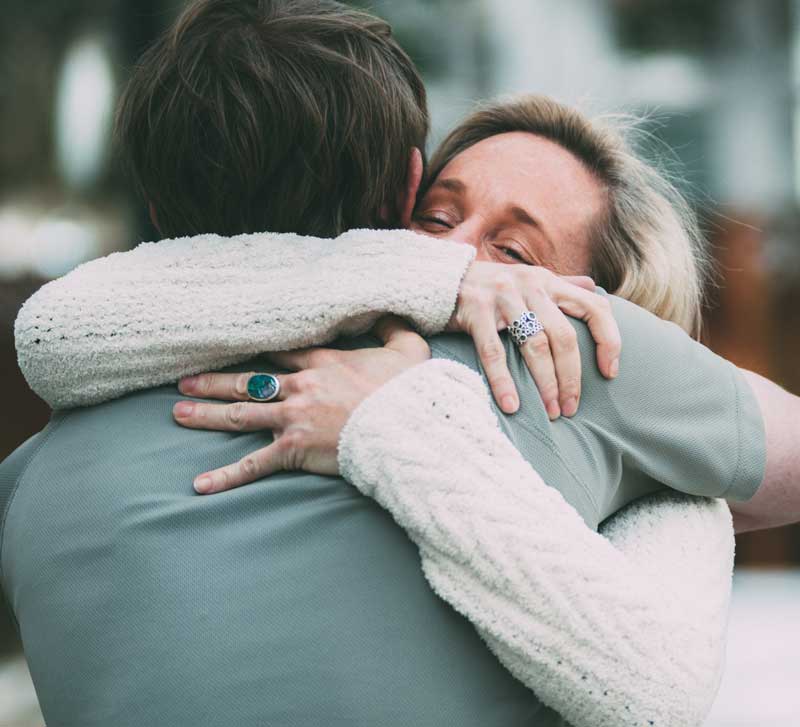
Getting Started: How to Find the Right Wilderness Therapy Program for Your Family
Now that you’re confident that a wilderness program can help your son or daughter, here are some steps/tips to help you find the perfect fit for your teen or young adult.
Working with an Educational Consultant
Wilderness therapy should be considered a component of a larger—and oftentimes—longer process. When enrolling in a wilderness program, do you know what the next steps will be after graduation? An educational consultant will not only help you navigate the nuances of all the different wilderness programs, but he or she will also help look at the larger picture and ensure optimal care between treatment programs and follow-up care.
To find an educational consultant near you, please visit, IECAOnline.com
Questions to Ask Wilderness Therapy Programs
When you first contact a wilderness program, they will have a list of things to inform someone about a wilderness therapy experience. However, you shouldn’t just rely on their prepared list. The website AllKindsOfTherapy.com and the National Association of Therapeutic Schools and Programs have both published lists of questions you should ask therapeutic wilderness programs. Please consult them as you develop your own list of questions to ask programs.
Wilderness Program & Group Specializations
In addition to deciding between a nomadic or basecamp wilderness model, it may help you to know that each program may have groups specializing in different struggles. For example there might be groups that are exclusively:
- therapeutic wilderness programs for young adults
- programs for struggling teenagers
- wilderness therapy for girls
- wilderness programs for boys
- wilderness programs for mental health issues. For example here at Aspiro, we have the Vantage Point program for teens and young adults with autism, aspergers, or other neurological differences.
Or you may find programs that focused their therapy around a specific modality, like:
- wilderness art therapy
- biofeedback treatment
- trauma-informed care
- cognitive behavioral therapy
- dialectical behavior therapy
- EMDR
- equine therapy
Each of these groups and modalities are better suited for certain clients. If you think your daughter would do better in an all girls group, then make sure to ask about it.
Navigating Wilderness Therapy Programs’ Reviews
It can be tricky to know how to navigate a review of a therapeutic program. Families wanting to maintain their privacy are reluctant to share their personal experiences and we respect that. On top of that, the students who may need a treatment program are hurting. If for some reason, wilderness therapy doesn’t help, it can leave these students all the more resentful. Even if a program has an amazing success rate of 95%, that leaves 5% of a program’s clients each year who are more than willing to leave negative reviews.
So should you just ignore reviews altogether? We don’t think so. Instead, here are some tips to help navigate a wilderness program’s reviews:
- Don’t just look at people who are angry. Try to find someone who the program genuinely helped and read about their experience.
- Ignore reviews that are posted by staff.
- If you can, ask to speak with an alumni family who went to the program. That way you will have a real, in-person review that you can trust.
For more tips on how to navigate these reviews, you can read, Insider Tips: Treatment Center Online Reviews – Fact or Fiction?
Certifications, Accreditations, & Affiliations
Another way to tell a quality wilderness therapy program is to look for their licenses, certifications, accreditations & affiliations.

State Licensure
The following states require wilderness therapy programs to be licensed: Colorado, Maine, North Carolina Oregon, Utah, Vermont
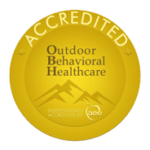
Outdoor Behavioral Health (OBH) Council
As mentioned previously, the Outdoor Behavioral Healthcare Council is the wilderness therapy association for programs. Not only do they set best practices and accredit programs, they host a biannual wilderness therapy conference called the Wilderness Therapy Symposium.

Association for Experiential Education (AEE)
“The Association of Experiential Education is a global community of experiential educators and practitioners with the shared goal of enriching lives through Experiential Education.”

Joint Commission
“An independent, not-for-profit organization, The Joint Commission accredits and certifies nearly 21,000 health care organizations and programs in the United States. Joint Commission accreditation and certification is recognized nationwide as a symbol of quality that reflects an organization’s commitment to meeting certain performance standards.”
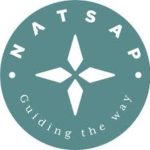
NATSAP
“The National Association of Therapeutic Schools and Programs serves as an advocate and resource for behavioral healthcare organizations which devote themselves to society’s need for the effective care and education of struggling young people and their families.”

CARF International
“CARF International is an independent, nonprofit accreditor of health and human services. CARF accreditation focuses on quality and results. Providers that meet our standards have demonstrated their commitment to being among the best available.”
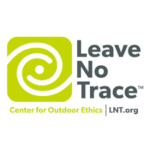
Center for Outdoor Ethics
“The Leave No Trace Center for Outdoor Ethics is a national organization that protects the outdoors by teaching and inspiring people to enjoy it responsibly. The Center accomplishes this mission by delivering cutting-edge education and research to millions of people across the country every year.”

Association of Challenge Course Technology
“The Association for Challenge Course Technology (ACCT) is an international trade association dedicated to standards, government relations, credentialing, professional development and advancement of our members.”

AdvancED
“AdvancED is a non-profit organization that accredits primary and secondary schools throughout the United States.”
Where are wilderness therapy programs located?
There are wilderness programs located throughout the US (see map). To find a specific wilderness program, we recommend you browse the following directories:

Written by:
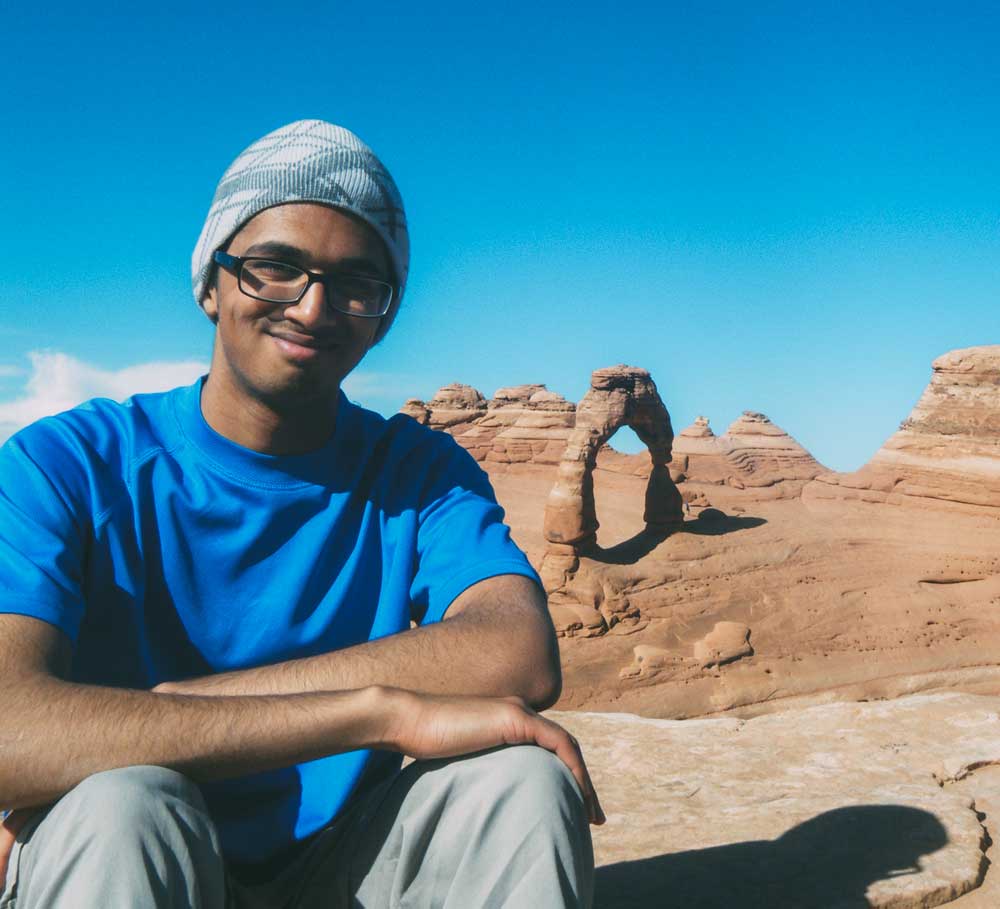
Any Questions?
If you have any questions, please get in touch.
We would love to hear from you.










